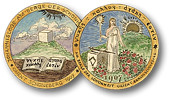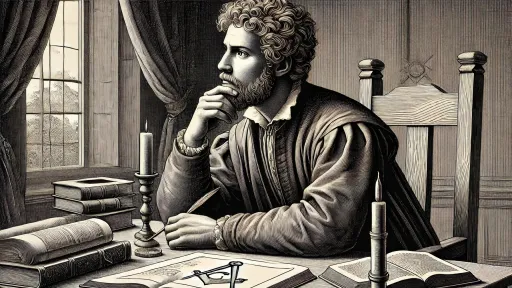html
How It All Began
Nine brothers from Schöneberg decided in 1907 to establish the Johannisloge "Am Berge der Schönheit" in an apartment on Belziger Straße. On September 15 of the same year, founding master Br. Adolf Rothenbücher lit the candles of wisdom, beauty, and strength.
The 1st World War and the period of inflation affected the life of the lodge, but in the years that followed, it became apparent that during this time of political and economic unrest, many people sought inner peace and contemplation within our temple. By 1927, the guild already had 131 members and flourished in the following five years.
Dark Years
During the National Socialist era, all lodges were dissolved, their houses plundered, and their temples devastated. These attacks, accompanied by a flood of defamation and insults against Freemasonry, were particularly harsh on many brothers as they—patriotic and national-minded—had hoped for something better from German fascism. However, dogmatism and fanaticism on one side and tolerance on the other are mutually exclusive. With the ban on March 4, 1935, the liquidation of German Freemasonry began; on July 21 of that year, our guild had to dissolve, and the lodge house in Splittgerbergasse, loved by the brothers, was destroyed by the war. Despite the threat of arrest and constant spying, a small circle of steadfast brothers gathered during the dark years of 1935-1945 at the so-called "Gottwald's Stammtisch" to preserve the old connection through conversations, excursions, and quiet celebrations of the Johannis and Christmas festivals.
A New Era
It is thanks to the unwavering belief of these brothers that one day light would again shine in our temple that immediately after the 2nd World War, the lodge proved its vitality. In Eisenacher Straße, on August 2, 1946, the united lodges "Blücher von Wahlstatt," "Am Berge der Schönheit," "Zu den drei Lilien," and "Zum schwarzen Adler" conducted their first work. At that time, the brothers often undertook hours-long marches on foot, and with sooty candles and thin water soup, they gathered and enjoyed being able to carry out their work ritually in brotherly community once more.
On February 12, 1949, our first work took place in the new lodge house at Ahornstraße 15a in Steglitz. The Johannislogen regained their strength and independence, and our guild counted 68 members in 1951. In 1958, we, along with the Grand Lodge, moved into the current lodge house at Heerstraße 28.
Stormy Years
In the years following the 50th anniversary celebration, a harmful tendency towards disunity became noticeable within our lodge. The departure of some of the most reliable brothers heavily damaged the guild; others moved to the eternal East or joined other communities. Surely, the relatively frequent changes in the chairmanship also had a negative impact. The number of members, the intellectual level of the work, and the discipline of the brothers declined, and unbrotherly quarrels sometimes threatened to break the chain. The fact that, despite everything, a certain consolidation is now noticeable speaks for the inner strength of Freemasonry and the steadfastness of some loyal brothers.
With the reunification of Germany, the 3 WK regained their properties in the former GDR. This societal and economic change led to a drain as brothers moved to other federal states for professional reasons. Consolidation and harmony... The fact that today the same 18 brothers always come to the lodge's work demonstrates the lodge's will to live, and the relatively large number of apprentices gives hope for the future. Joint trips, especially the one to Vienna in the year..., strengthened the chain of the lodge community. A new task for our guild was the reopening of the lodge "Friedrich zur Tugend" in Brandenburg an der Havel, which was also achieved through the dual membership of our brothers.
There were also times when the guild found itself in turbulent waters, which were steered back into calm waters through the continuity of the brothers. Our social involvement was not only emphasized by donations but also lived within the lodge, benefiting not just those affected but the entire guild. Through our intensified public relations work, we have achieved a healthy growth of the brotherhood as a result.
The current atmosphere is characterized by constructive harmony.
If all brothers truly understand and act according to the motto of our lodge, "The beauty of the soul is love," we will be able to navigate every cliff. A lodge is only ever worth as much as its brothers are willing to sacrifice for it.
"Take time for the lodge, otherwise time will take your lodge from you."
Br. Johannes Bischoff for the 75th, expanded by Br. Ulrich Bettge for the 100th.

